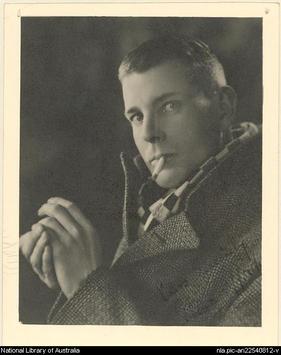
Malcolm R. Afford known as Max Afford, was an Australian playwright and novelist.
Edmund Piers Barclay was an English-Australian writer known for his work in radio drama. Radio historian Richard Lane called him "Australian radio's first great writer and, many would say, Australian radio's greatest playwright ever." Frank Clelow, director of ABC Drama, called him "one of the outstanding radio dramatists of the world, with a remarkable technical skill and ability to use the fade-back without confusing the audience."
Joseph George McParlane, known as Joe Valli, was a Scottish-Australian actor who worked in vaudeville and films. He had a long-running vaudeville partnership with Pat Hanna as "Chic and Joe".
The Cedar Tree is an Australian musical play produced in the wake of the success of Collits' Inn. The 1934 Melbourne production at the Princess Theatre was presented by F. W. Thring and starred Gladys Moncrieff.
Sheepmates was a proposed Australian film from director F. W. Thring based on a 1931 novel by William Hatfield. It commenced filming in 1933 but was abandoned.
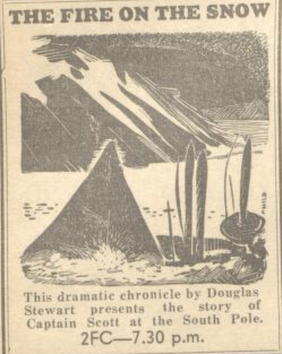
The Fire on the Snow is a 1941 Australian verse play by Douglas Stewart about the Terra Nova Expedition to Antarctica by Robert Falcon Scott. It premiered on ABC radio on 6 June 1941 to great acclaim and inspired a series of Australian verse dramas on ABC radio.
The Little Sheep Run Fast is a 1940 Australian play by Sumner Locke Elliott. Being a drama, it was a change of pace from his first two stage plays which were both comedies.
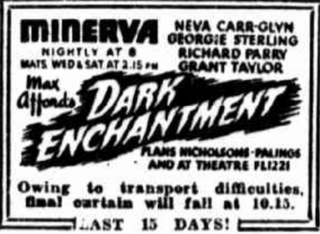
Dark Enchantment is a 1949 Australian play by Max Afford.
Ned Kelly is a 1942 radio play by Douglas Stewart about the outlaw Ned Kelly.
Awake My Love is a 1947 Australian stage play by Max Afford.
Red Sky at Morning is a 1935 Australian stage play by Dymphna Cusack. The play helped launch Cusack's writing career and was filmed in 1943.
Daybreak is a 1938 Australian play by Catherine Shepherd.
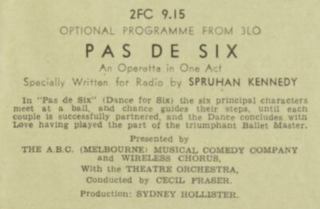
Pas de Six is a 1936 Australian operetta that aired in November 1936. It went for an hour and was recorded in Melbourne.
Merry-Go-Round is a 1936 Australian radio play by Max Afford. It won first prize in the ABC Radio Contest for best play.
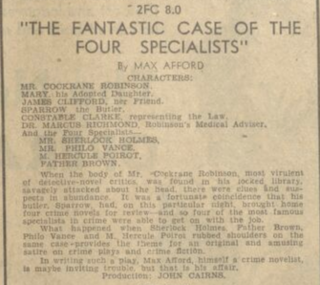
The Fantastic Case of the Four Specialists is a 1937 Australian radio play by Max Afford. The play was one of Afford's best known.
The Twelve Labours of Hercules is a 1938 Australian radio serial by Max Afford based on the legend of Hercules.
Five White Fingers is a 1939 Australian radio play by Max Afford. Described as a "macarbe comedy" it was one of his most popular early works.

The Queer Affair at Kettering is a 1940 Australian radio drama by Max Afford starring his detective hero Jeffrey Blackburn and his wife Elisabeth. Unlike many Blackburn adventures, it was not a serial but a one-off mystery.
A Cat Across Their Path is a 1939 Australian radio play by Max Afford.
The Medea of Euripides is a 1954 Austraslian radio play by Ray Mathew. It was his adaptation of Medea by Euripides.









